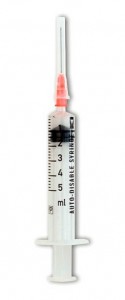 This is how Dean Kamen, the consummate inventor, framed his talk on Day 3 at TEDMED. If this is the definition of genius, then Marc Koska, who developed a syringe which cannot be reused and also spoke yesterday, certainly is one. The syringe and the associated public health campaign he ran in India and other parts of the developing world to raise awareness about the danger of reusing needles, common practice in these countries, is credited with saving 10 million lives.
This is how Dean Kamen, the consummate inventor, framed his talk on Day 3 at TEDMED. If this is the definition of genius, then Marc Koska, who developed a syringe which cannot be reused and also spoke yesterday, certainly is one. The syringe and the associated public health campaign he ran in India and other parts of the developing world to raise awareness about the danger of reusing needles, common practice in these countries, is credited with saving 10 million lives.
Both Kamen’s and Koska’s presentations touched on a theme that hasn’t been discussed much here: the interface between the technology inventor and the private sector industry that develops, manufactures, markets and distributes products.
For Koska’s work to be successful, he had to develop a syringe that would be the same price as existing products and convince medical device manufacturers, 14 of them to be exact, to work together with him through patent licensing and other means, to facilitate these products’ distribution in the developing world- not something they met with enthusiasm at the beginning.
Kamen also highlighted this dynamic: he showed examples of a few of his more recent inventions, a prosthetic arm developed for amputees, particularly soldiers returning from the battlefield in Iraq with missing limbs, and a 3’x3’ box housing the ability to purify water from any source and requiring only an electrical outlet and the water to be purified (“Just add water…any water…really”).
These were technological feats with all the right qualities: the products worked very well, the design was streamlined and the parts chosen were cheap to manufacture. Despite this, Kamen couldn’t find company partners that would be willing to fund the large-scale manufacturing, marketing and distribution necessary to make these products widely available. In both cases he turned to what could be considered “unconventional sources” for support.
In the gold mining industry dynamite is used to blast out rock and access the precious material. Accidents from dynamite cause a hundred or more deaths in a given mine annually. Kamen approached the mining company with a proposal, and now he is developing what is essentially a robot with prosthetic arms to deploy the dynamite. This funding is supporting further development of the arm prosthesis.
In the case of his water purifier, which has the potential to save millions of lives worldwide, he convinced Coca-Cola (with its far-reaching distribution network) to offer it side-by-side with a new “on-demand” fountain drink product that Kamen had helped develop with them.
Because of these partnerships, Kamen’s and Koska’s products will get to where they are needed most. However, these stories highlight the contentious and dynamic interaction between the inventor with a disruptive technology and large companies with power and entrenched interests. In TIDO we think about this all the time- Children’s investigators are frequently coming up with technologies that can change the medical standard of care. How do we get them out there? How do we convince the entrenched big players to invest in a new area that could threaten their core business? What leverage do we have? How can we enhance our leverage?
It was gratifying to see the successes and the struggles of Kamen and Koska, and reinforced to me the need for creativity and perseverance - and teamwork - to make (and sometimes to force!) a creative invention into a product.







